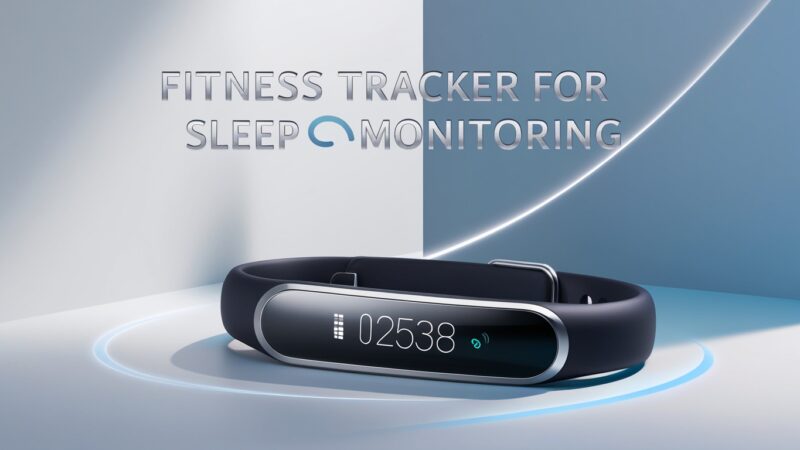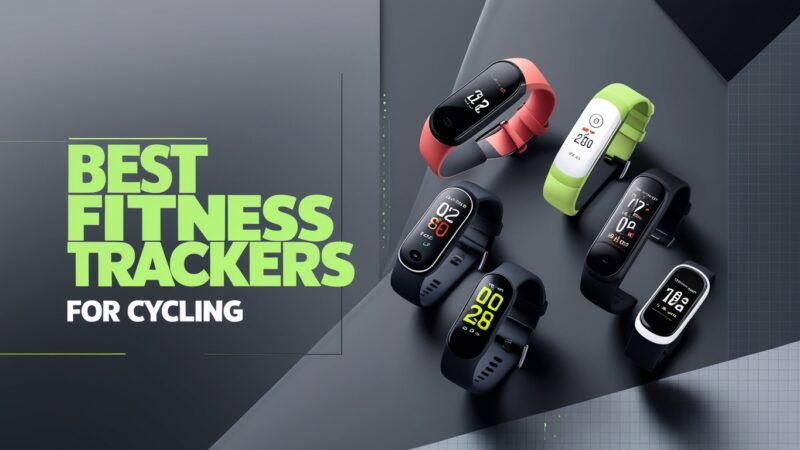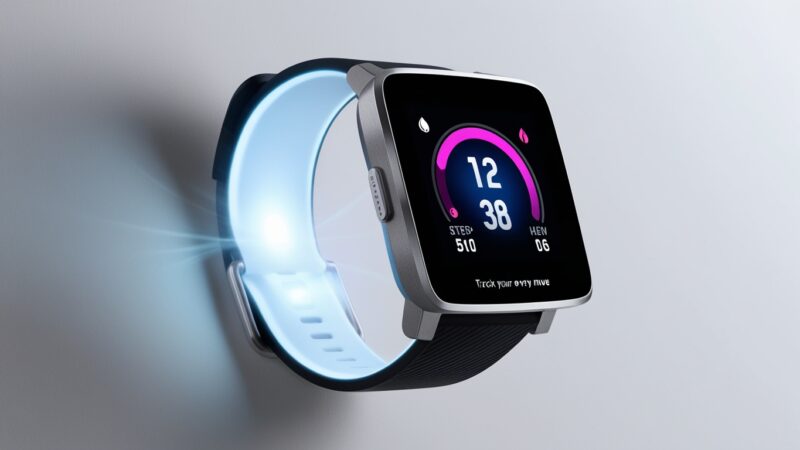Fitness Tracker Price Comparison for Savvy Buyers

Fitness Tracker Price Comparison: Navigating the Market for the Best Deals
Comparing Fitness Tracker Prices: Finding the Perfect Balance of Features and Value
Hey there! If you’re diving into the realm of fitness technology, you’ve probably noticed just how crucial fitness trackers have become for keeping tabs on our health and wellness. But with a sea of options out there, figuring out which fitness tracker to choose can feel a bit like finding a needle in a haystack, right? That’s why a solid fitness tracker price comparison is essential. This guide’s here to help you sift through the options so you can snag the right tracker that hits that sweet spot between features and price.
Understanding the Factors that Influence Fitness Tracker Prices
Let’s break it down. When you’re looking at fitness tracker prices, there are several key players at play:
- Brand Recognition: Big names like Fitbit, Apple, and Garmin often come with a heftier price tag, while smaller brands may have more wallet-friendly options.
- Features Galore: Advanced features like heart rate monitoring and GPS tracking usually mean you’ll pay more. Basic models that simply count steps? They’ll be lighter on your wallet.
- Material Quality: Premium materials can bump up the cost, so think about what you’re comfortable with.
- App Integration: Trackers that sync well with popular fitness apps might command a higher price, too.
That’s not all! Features like blood oxygen level measurement or ECG capabilities can shoot the price up, making it essential to decide what you really need.
Navigating the Fitness Tracker Market: Balancing Features and Price
Okay, so how do you actually find the fitness tracker that fits you like a glove? Start by getting clear on your fitness goals and what metrics matter most to you. Are you just looking to count steps, or do you want all the bells and whistles, like heart rate tracking and GPS?
After you’ve figured out your must-haves, it’s time to hit the market! Compare prices from different retailers because those prices can jump around. Plus, be on the lookout for sales, discounts, and bundle offers—you never know when you might snag a great deal!
Comparison Tables: Uncovering the Best Deals
To simplify your search, we’ve put together comparison tables that spotlight key features and prices of popular fitness trackers. These should make it way easier to spot a great deal that meets your needs and budget!
| Model | Price | Heart Rate Monitoring | GPS | Sleep Tracking | Battery Life |
|---|---|---|---|---|---|
| Fitbit Charge 5 | $149.95 | Yes | Yes | Yes | Up to 7 days |
| Apple Watch Series 6 | $399.00 | Yes | Yes | Yes | Up to 18 hours |
| Garmin Forerunner 45 | $99.99 | Yes | Yes | Yes | Up to 13 hours |
| Samsung Galaxy Watch 4 | $249.99 | Yes | Yes | Yes | Up to 40 hours |
So remember, the “best” fitness tracker isn’t just the one that costs the most. The real winner is the one that suits your wallet and meets your needs. Make sure to dive deep into your research, and you’ll be on your way to achieving your fitness goals without emptying your bank account!
Key Factors to Consider When Choosing a Fitness Tracker
Price
Let’s face it, price definitely matters. You can find fitness trackers ranging from under $50 to over $200. So sit down, figure out your budget, and find a tracker that gives you what you need without hitting your pocket too hard. Remember, pricier models often come with those shiny features like built-in GPS and heart rate monitoring.
Compatibility
Check out the compatibility of your potential fitness tracker with your existing devices. Most trackers sync with an app so you can track your data and set fitness goals. Make sure it’s compatible with your smartphone’s operating system—whether that’s iOS, Android, or Windows.
Activity Tracking
Fitness trackers come loaded with different tracking capabilities, from simple step counts to advanced features like heart rate tracking and sleep monitoring. Think about what activities you want to log and choose a model that meets those needs.
Accuracy
When it comes to tracking, accuracy is key. Look for fitness trackers known for their precision in measuring steps and heart rate. Check reviews from real users to see how well a model performs.
Customization
Some trackers let you customize the activities you track or the metrics you focus on. This can be a lifesaver if you have specific fitness aspirations or enjoy a variety of activities.
Battery Life
No one wants their fitness tracker dying mid-workout. Check for trackers with a solid battery life, ideally ones that charge quickly or can have their batteries replaced.
Design and Comfort
The look and feel of your fitness tracker matter too! Search for models that are lightweight and comfy enough to wear all day. Some trackers come in various colours and styles, so you can find something that matches your vibe.
Additional Features
Consider what extra features might serve your needs:
- GPS tracking for outdoor adventures
- Smartwatch add-ons like call/text notifications
- Water resistance for swimming
- Syncing with other fitness apps or devices
Brand Reputation and Customer Support
Brand reputation matters! Look for brands renowned for reliability and good customer service. If anything goes wrong with your device, you’ll want to know you’re well taken care of.
By keeping these key factors in mind, you’ll be armed and ready to find just the right fitness tracker that fits your lifestyle and goals.
Maximizing Your Fitness Tracker Investment: Tips for Getting the Most Value
Understanding Your Fitness Tracker’s Capabilities
You’ve made a solid investment, so take some time to learn what your fitness tracker can do. Each device targets different fitness goals, which means familiarising yourself with its features will help you unlock its full potential and value.
Optimizing Your Fitness Tracker Settings
Many fitness trackers come with settings for customization. Adjusting things like activity tracking sensitivity and heart rate monitoring can make a huge difference in the data accuracy you get. Tweak those settings to make your tracker truly yours!
Integrating Your Fitness Tracker with Other Devices and Apps
Most modern trackers can easily work with other devices like smartphones and smartwatches. By embracing these integrations, you get a fuller picture of your health, which helps keep you on track. Explore which devices and apps work best with your tracker!
Maximizing the Battery Life of Your Fitness Tracker
To keep your device running smoothly, it’s crucial to optimize battery life. Check if your tracker has battery-saving features, like automatic sleep detection and display brightness adjustments. Simple tweaks can prolong battery life, letting you track your progress without interruptions.
Utilizing the Data Provided by Your Fitness Tracker
The real magic of a fitness tracker is in the data it collects. Regularly review your data—like step counts, distance, and calorie burn. Identify patterns and set realistic goals based on your progress. Many trackers offer insights tailored to your data, so don’t skip over those nuggets of wisdom!
Keeping Your Fitness Tracker Clean and Well-Maintained
To keep your tracker in top shape, make cleaning a regular habit. Follow the cleaning instructions from the manufacturer to maintain its accuracy and durability. A clean tracker means reliable tracking!
Embracing the Community and Challenges Offered by Your Fitness Tracker
Many fitness trackers come with social features and community challenges that add a bit of fun to your fitness journey! Dive into leaderboards and group challenges to stay motivated. Engaging with other users can make your journey a whole lot more enjoyable!
By keeping these tips in mind, you can ensure your fitness tracker truly serves its purpose and helps you get the most value from your investment.
The Evolution of Fitness Tracking Technology and Its Impact on Pricing
The Rise of Fitness Trackers and Their Impact on the Market
Over the last decade, fitness trackers have truly taken off, changing how we keep an eye on our health and fitness. They’ve transformed from niche gadgets to everyday essentials that track everything from steps to heart rate. As these devices evolved, so did their pricing and the overall market landscape.
The Democratization of Fitness Tracking
In the early 2000s, fitness trackers were primarily for dedicated athletes, and their prices reflected that exclusivity. However, as more people wanted them and production costs dropped, these gadgets became accessible to everyone. This shift led to a wider range of options—think budget devices or high-end models with advanced features.
The Role of Competition and Innovation
With fitness trackers gaining popularity, competition among brands has spurred rapid innovation. New companies jumping into the market pushed established brands to enhance their offerings, resulting in more features and changing price ranges.
The Influence of Wearable Technology Advancements
Tech improvements—like better sensors and longer battery life—are changing the game. With such advancements, manufacturers are creating more accurate, feature-rich devices. That means there’s now a broader pricing spectrum, catering to users wanting comprehensive tracking or those looking for simpler, budget-friendly options.
The Emergence of Smartwatches and Their Impact
The rise of smartwatches, many of which boast fitness tracking features, has also reshaped the fitness tracker market. Shoppers now weigh their choices between dedicated trackers and multifunction smartwatches, which can influence spending and pricing trends.
The Influence of Brand Positioning and Perceived Value
Brand reputation plays a key role in fitness tracker pricing. Well-known brands often charge more due to their track records in quality. Lesser-known brands might have affordable picks, but you often need to weigh feature differences against price.
The Impact of Subscription-Based Services
Some tracker brands have opted for a subscription-based model, offering added features or services for a fee. This can affect the sticker price, as the device cost might be subsidised through ongoing subscriptions. Check if that long-term value aligns with what you’re looking for!
The Role of Technological Obsolescence
Like any fast-moving tech, fitness trackers face obsolescence issues. Newer models seem to hit the market daily, often causing older products to lose resale value. This reality impacts how consumers think about investing in the latest tech versus choosing more budget-friendly but outdated options.
The Importance of Personalization and Customization
The market for fitness trackers has grown to embrace personalization. Nowadays, consumers want devices that cater to their unique fitness styles and tastes. This demand has led to more pricing options as brands offer custom features and accessories.
The journey of fitness tracking technology has incredibly influenced the pricing landscape, offering consumers a richer diversity of options to meet their health and fitness needs.
Integrating Fitness Tracker Data into Your Wellness Routine for Optimal Results
Unleashing the Power of Fitness Tracker Data for Your Wellness Journey
In our on-the-go world, where everyone is striving for that healthier lifestyle, integrating data from fitness trackers into your routine can be a real game changer. These devices offer insights that provide the necessary push to reach your wellness goals. By leveraging your tracker’s data, you’ll get a better grasp of your body’s needs and make savvy choices about your fitness journey.
Personalized Insights for Targeted Improvements
Your fitness tracker gathers data—from daily steps to heart rate variability. Dive into this info to identify trends that reveal your unique fitness profile. This insights-driven approach helps pinpoint areas for improvement—whether that’s ramping up your activity levels or enhancing your sleep.
Optimizing Your Exercise Routine
Integrating fitness tracker data helps you adjust your exercise plan for best results. Track metrics such as calorie burn and heart rate to find the most effective workouts. By harnessing this data, you’ll optimise your routine and see improved results quicker.
Enhancing Sleep Quality
Sleep plays a massive role in overall health, and fitness trackers can help you monitor your sleep patterns. Utilize your sleep data to nurture better habits—adjust your bedtime, change your sleep environment, or explore relaxation techniques. Better sleep means more energy for your day-to-day life.
Monitoring Stress and Recovery
Fitness trackers can also shed light on your stress levels and recovery needs. By keeping tabs on metrics like resting heart rate, you’ll unearth insights into how well you’re managing stress. Equipped with this info, implement stress management strategies like mindfulness or modify your exercise intensity during demanding times.
Fostering Motivation and Accountability
Using your fitness tracker’s data can serve as a strong motivator. Tracking progress, celebrating milestones, and setting achievable goals foster a sense of accountability. Staying connected with your health data keeps you on track toward your aspirations.
Unlocking the Full Potential of Fitness Tracker Data
Getting the most out of fitness tracker data involves a strategic approach. Continuously analyse your metrics, try new strategies, and remain flexible with your routine. By embracing the insights that your fitness tracker delivers, you’re looking at a potential breakthrough in your overall wellness journey.
You can now buy my E-Book on Discount for only $4! If you need personal help or a program, you can reach out to me on Instagram!
Current Trends in Fitness Tracker Prices
As we leap into 2024, the landscape of fitness tracker prices continues to evolve in exciting ways. Here’s what I discovered about the current trends that influence fitness tracker price comparisons:
- Smart Features Becoming Standard: With innovations in health monitoring, features such as SpO2 monitoring (blood oxygen levels) and ECG capabilities are increasingly found in devices costing less than $100. This means you get more for your money without needing to break the bank.
- Sales and Seasonal Discounts: Major online retailers and fitness brands often run sales during holidays (Black Friday, New Year, etc.). This means tracking prices regularly can lead to significant savings during these periods.
- Entry-Level vs. Premium Products: While entry-level fitness trackers now often feature heart rate and sleep monitoring at lower prices (around $50-70), premium models, which offer more advanced features, can exceed $300, highlighting a clear distinction in the market.
- Increased Competition: Brands like WHOOP and Oura are shaking up the market by offering subscription-based models that can lower the initial purchase price but come with ongoing fees. This creates a need to compare not just upfront costs but long-term expenditure as well.
The Global Fitness Tracker Market Overview
The global fitness tracker market is buzzing, with projections showing consistent growth. Here are some insights into its current state:
- Market Value Growth: The fitness tracker market was valued at over $36 billion in 2021 and is projected to grow at a CAGR of more than 23% through 2028. This booming market means you have plenty of options, often leading to competitive pricing.
- Consumer Health Consciousness: As more people become health-conscious and tech-savvy, demand for budget-friendly fitness trackers with essential features will keep increasing. You can expect frequent price adjustments as brands aim to cater to these expanding consumer bases.
- Emergence of New Brands: Up-and-coming brands disrupt traditional pricing models with innovative yet affordable products, encouraging established brands to rethink their pricing strategies.
- Geo-Specific Trends: Markets in Asia-Pacific are witnessing a surge in fitness tracker penetration, which provides opportunities for deals exclusive to that region—don’t forget to compare these prices if you’re shopping internationally!
How to Compare Prices Effectively
With potential deals lurking everywhere, here’s how you can make your fitness tracker price comparison more efficient:
- Use Price Comparison Websites: Websites like PriceSpy or Google Shopping enable you to see fluctuations in prices across multiple retailers in real-time.
- Read Reviews and Ratings: Customer reviews often mention any discrepancies between listed features and actual performance, offering invaluable insights alongside the price.
- Sign Up for Alerts: Many retailers offer price drop alerts via newsletters, ensuring you don’t miss out on a deal when they cycle through a sale.
- Consider Used and Refurbished Models: If budget is a concern, don’t overlook refurbished units from reputable sellers, where you can find high-end trackers at a bargain.
- Join Online Communities: Forums and social media groups can provide community insights on deals, with members sharing tips on the best prices they’ve found.
Impact of Mobile Apps on Fitness Tracker Costs
User experience is a growing factor in the prices of fitness trackers, especially with mobile apps that enhance functionality.
- Exclusive App Features: Some brands have integrated proprietary apps that offer advanced metrics or features, often justifying higher price points.
- Subscription Services: Some tracks come with premium app subscriptions that provide additional features, which can inflate overall costs. For example, WHOOP charges a monthly fee after a free trial period.
- User Trends: With applications collecting vast amounts of user data, trackers are now pivoting towards providing customisable options for data privacy, impacting costs indirectly as brands strive to offer greater transparency and security.
Conclusion
In our deep dive into fitness tracker price comparison, we’ve explored various factors influencing pricing, including brand reputation, features, and market trends. With an ever-growing selection of trackers, understanding how to navigate these options is vital. By focusing on personal needs and budget constraints, you can find a tracker that offers the best value without compromising essential features. Always consider current market trends, utilise price comparison tools, and remain aware of new entries in the market to truly snag the best deal on your fitness journey. Whether you choose an entry-level device or a feature-loaded tracker, being informed will pave the way for success in achieving your health goals!
For more information, explore our website. You can find answers to common questions in our FAQ section, learn more about us on our Home page, discover the range of services we offer in the What We Provide section, get in touch with us through the Contact page, and stay connected with us on our Socials.
You can now buy my E-Book on Discount for only $4! If you need personal help or a program, you can reach out to me on Instagram!






